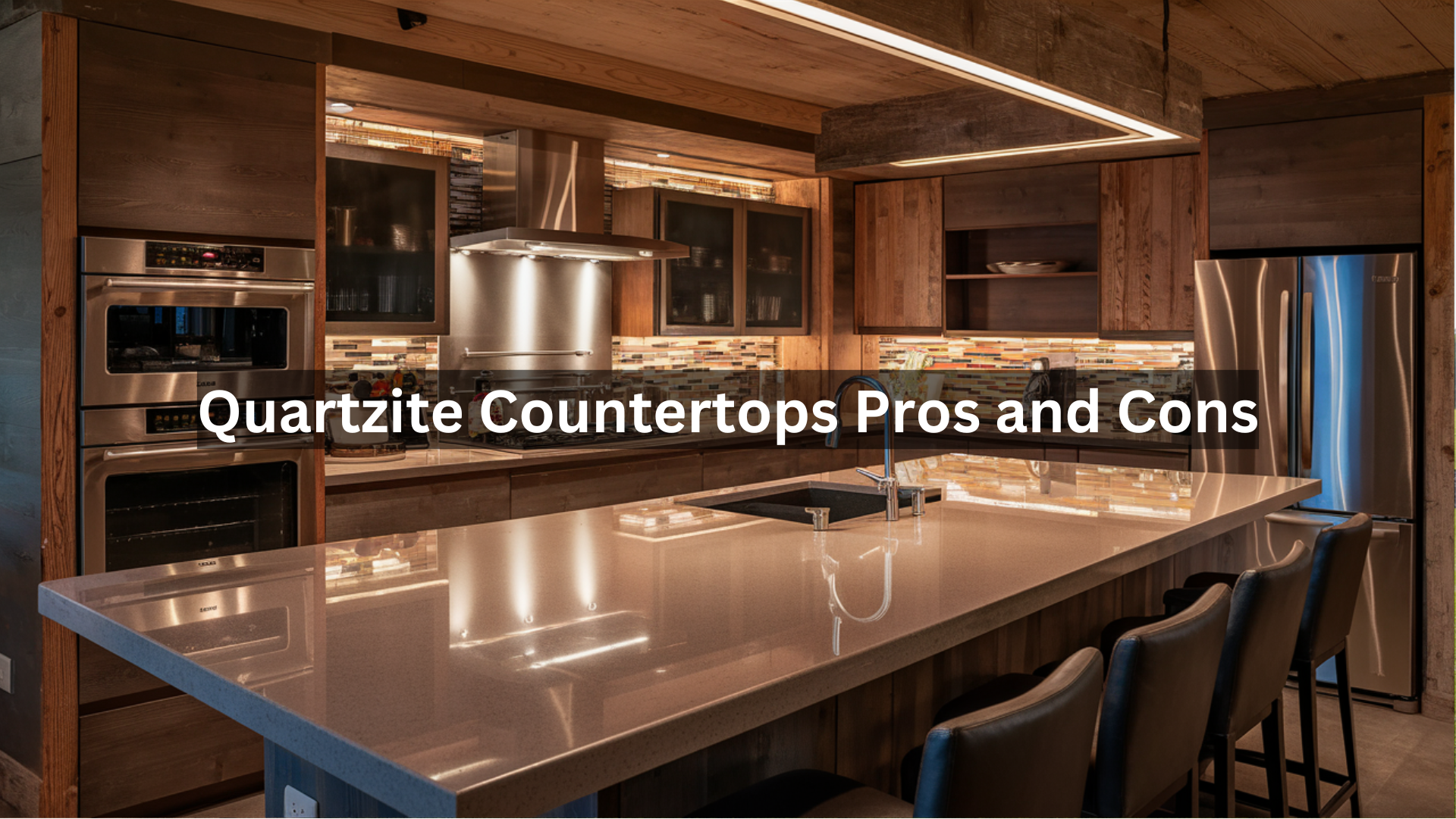Are you trying to decide if quartzite countertops are worth the investment? I was in your shoes last year, feeling overwhelmed by all the options. After months of living with quartzite in my kitchen, I’m sharing everything you need to know—the good, the bad, and the practical facts.
In this article, you’ll learn:
- What exactly is quartzite (and how does it differ from quartz)
- The complete list of pros and cons
- Which rooms work best for this material
- How quartzite compares to other popular countertop options
- Simple tips to keep your investment looking great for years
I’ve done the research and lived with the results. I’ve talked with installers, designers, and other homeowners. I’ll help you decide if quartzite is the right choice for your home and budget. No marketing hype—just honest insights from someone who’s been through the process.
What is Quartzite?
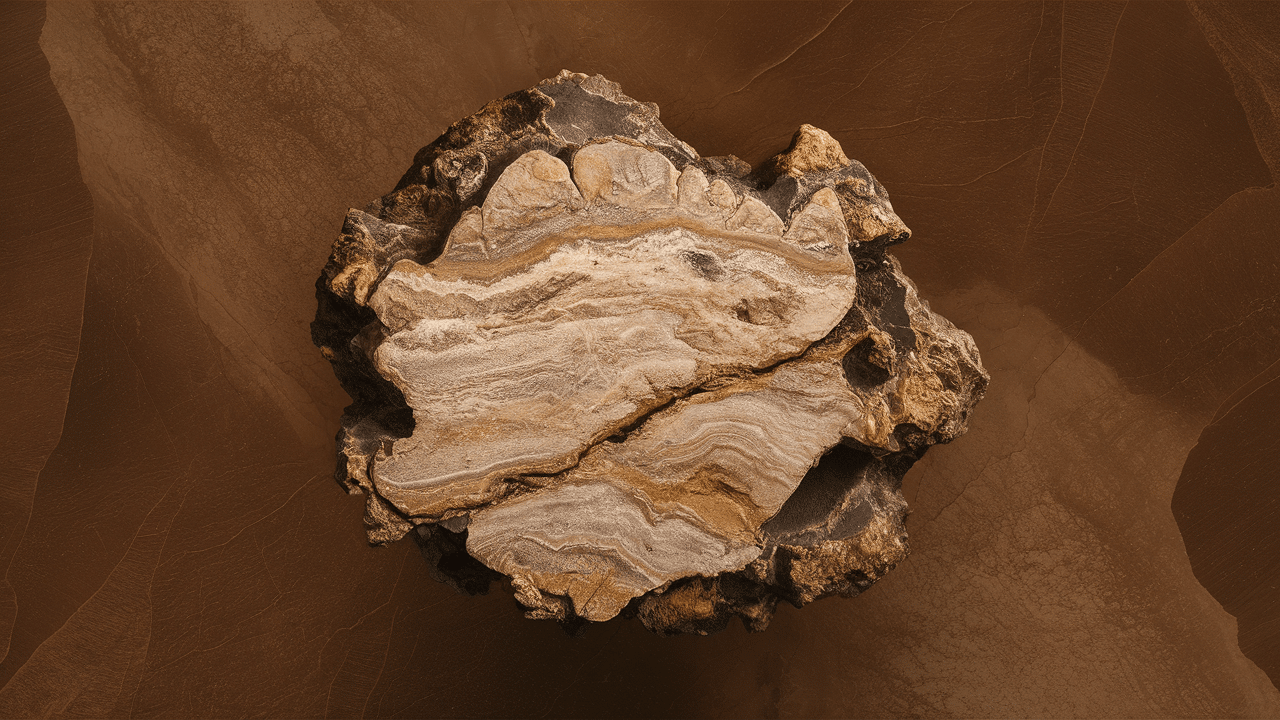
Quartzite is a natural stone formed when sandstone undergoes intense heat and pressure deep within the earth. This process transforms the stone into a hard, crystalline material.
The stone typically shows beautiful patterns of whites and grays, though you can find options with hints of blue, gold, or even pink. No two slabs are exactly alike, which means your countertop will be one of a kind.
One common confusion is between quartzite and quartz. They sound similar but are very different materials. Quartz countertops are engineered products made from crushed quartz (about 90%) mixed with resins and pigments. Quartzite, as I’ve mentioned, is completely natural.
The Pros of Quartzite Countertops
I’ve grown to love several things about my quartzite countertops:
Extremely Hard and Durable
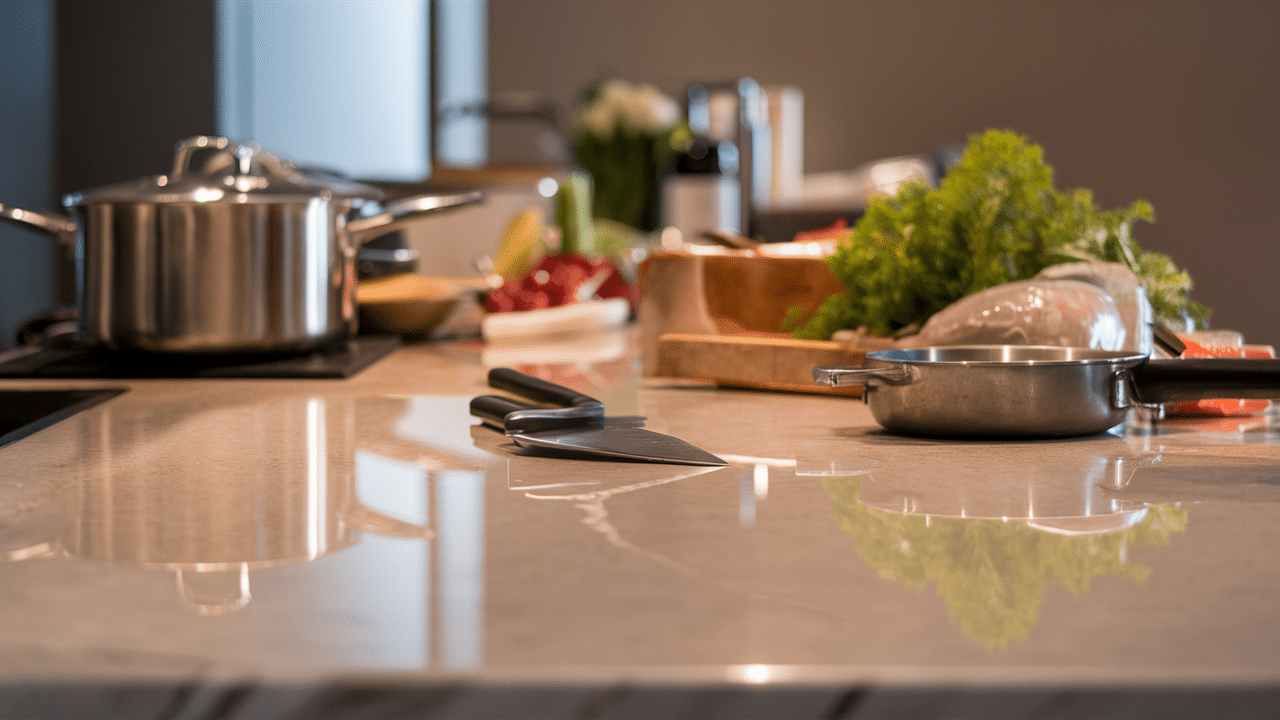
Quartzite ranks around 7 on the Mohs hardness scale (diamonds are a 10), which makes it more resistant to scratches than many alternatives. In my kitchen, I’ve dropped heavy pots and dragged groceries across the surface without any damage.
This toughness comes from the natural formation process, where intense pressure transforms sandstone into a rock nearly as hard as diamonds.
For busy families or avid cooks, this durability means less stress about damaging your investment. Even after a year of heavy use, my countertops show virtually no signs of wear.
Heat Resistant

I can place hot pans directly on the surface without worry. The stone won’t scorch or burn. This heat resistance has been a game-changer in my kitchen routine. No more searching for trivets or cooling racks in a hurry!
Quartzite’s natural crystalline structure handles temperature changes remarkably well. During holiday cooking, when every inch of counter space counts, this feature proves incredibly valuable.
While I still use trivets for extremely hot items out of habit, it’s nice knowing that an absent-minded moment won’t ruin my countertops. This is a significant advantage over options like laminate or some engineered materials that can melt or discolor under heat.
Stunning Natural Beauty
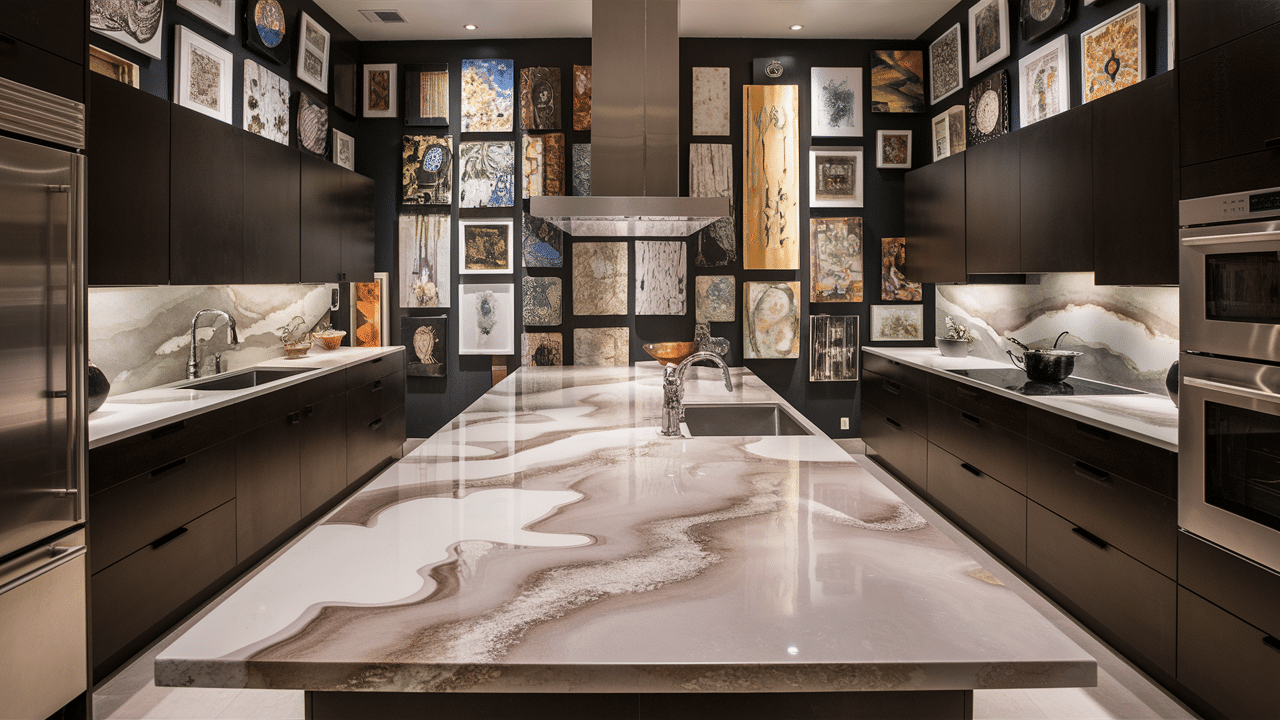
The patterns flow like frozen water or clouds. It creates a focal point in my kitchen that guests always comment on. This natural beauty comes from real mineral deposits formed over millions of years.
My White Macaubas quartzite shows stunning gray veining that changes subtly in different lighting. Each slab tells its own geological story with unique patterns that can’t be perfectly replicated. When choosing my slabs, I felt like I was selecting art pieces rather than building materials.
Photos don’t fully capture the depth and dimension of real quartzite—the way light plays across the surface throughout the day adds life to the kitchen. Unlike manufactured options, this beauty comes straight from nature, giving my space an authentic character.
Less Common
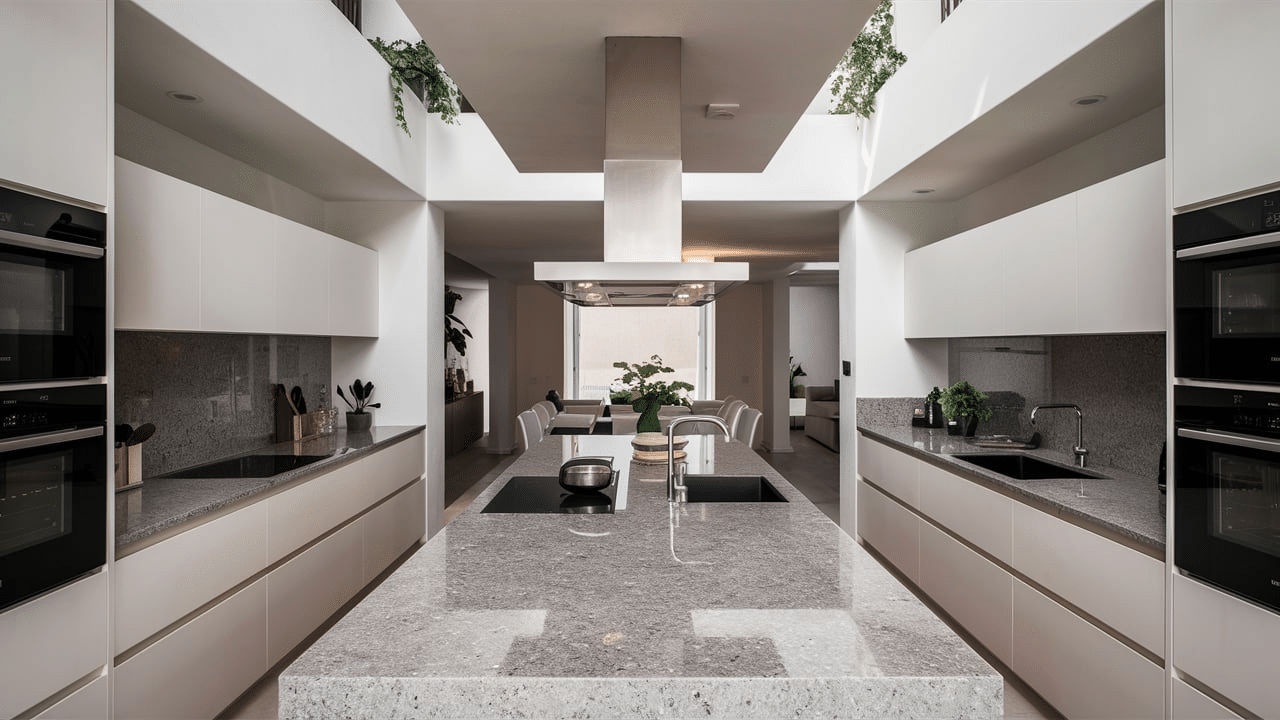
While everyone seems to have granite or quartz, quartzite feels more special and unique. When friends visit my home, they often ask about my countertops because they haven’t seen anything quite like them before.
This uniqueness adds a conversation starter to my kitchen. Quartzite’s relative rarity compared to more common materials means your home won’t look like everyone else’s on the block.
Designers and real estate agents tell me that this exclusivity factor is increasingly important to homebuyers looking for something beyond the standard options. Though trends come and go, having something distinctive tends to age well in home design. This uniqueness factor has made me appreciate my choice more over time.
Good Resale Value
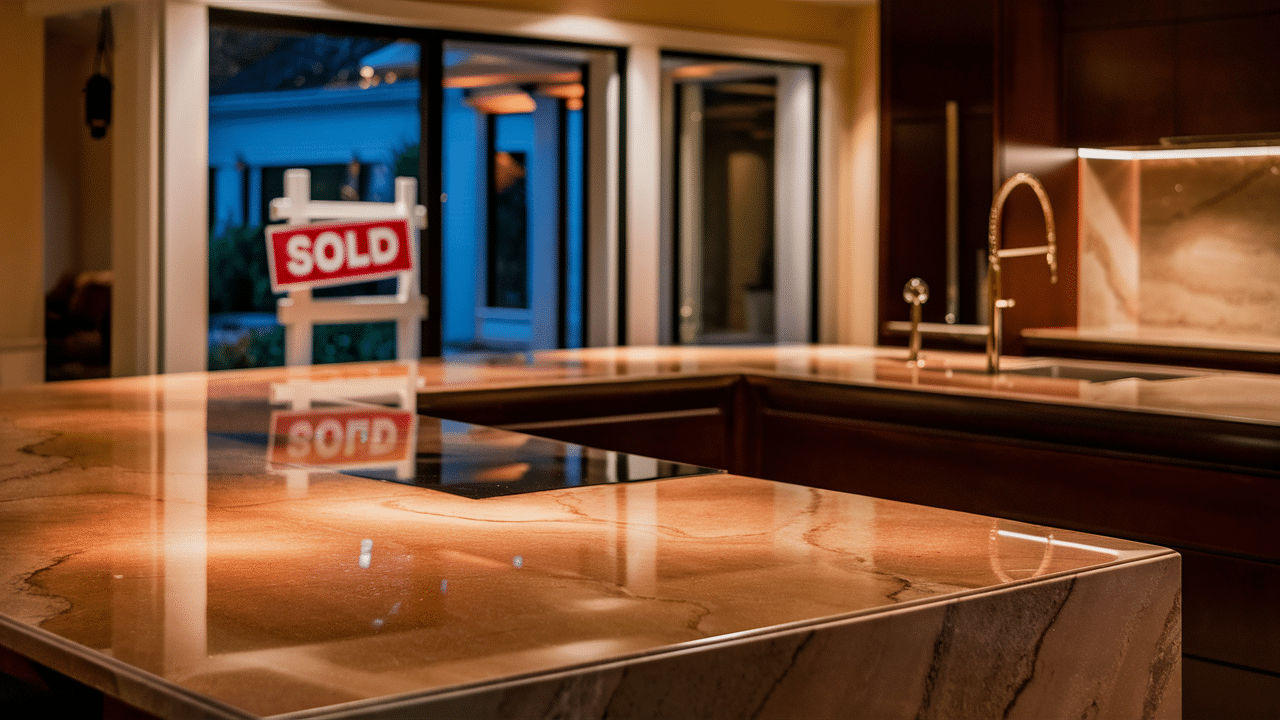
Quality materials like quartzite often boost home value compared to basic options. When I invested in these countertops, my real estate friend assured me I’d see most of that money back if I ever sold my home.
Premium materials signal to potential buyers that the home has been well-maintained and thoughtfully upgraded. In my neighborhood, homes with high-end natural stone countertops typically sell faster and for better prices than those with basic materials.
While trends change, natural stones like quartzite have proven to have staying power in the market. Buyers recognize the value of materials that combine beauty with longevity. Even if a future owner has different tastes, they’ll appreciate not having to replace low-quality countertops right away.
The Cons of Quartzite Countertops
I want to be honest about the drawbacks, too:
Higher Cost
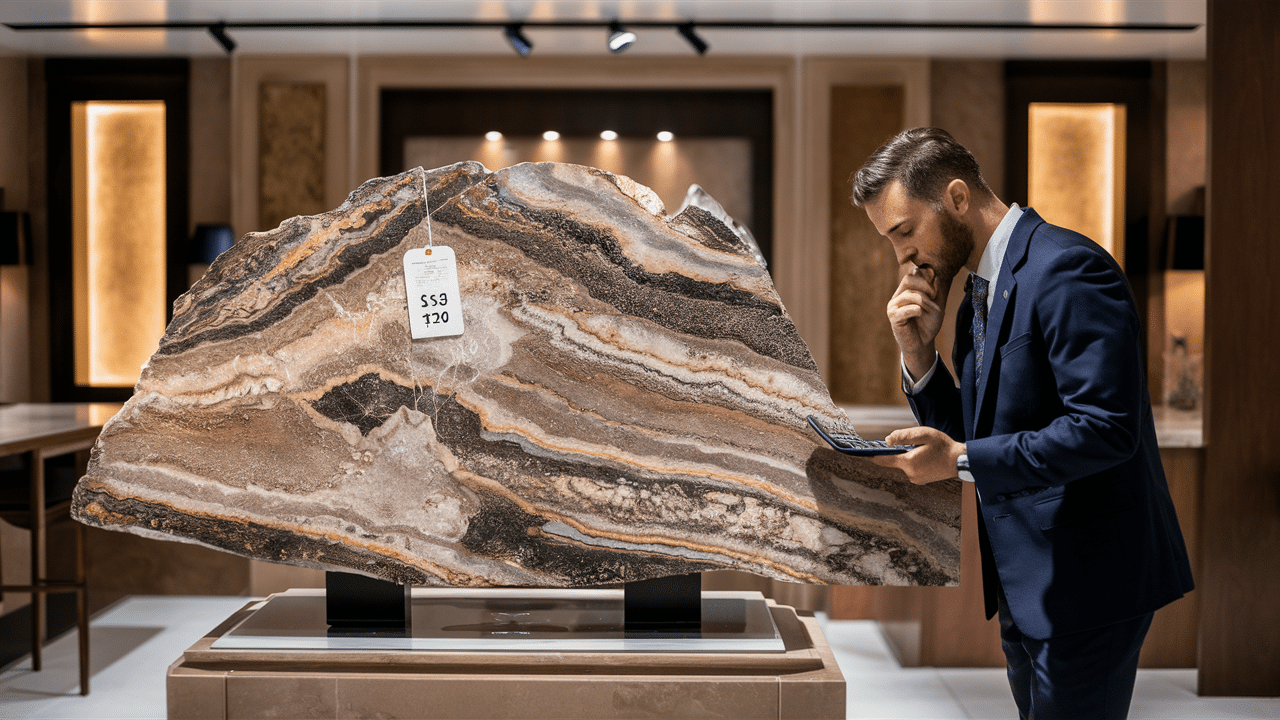
Quartzite typically costs $60-120 per square foot installed. This makes it more expensive than many other options. When I was planning my budget, this price point definitely caused some sticker shock. For my medium-sized kitchen, the total came to nearly $4,000 for materials and installation.
The cost varies based on the rarity of the stone, with more exotic colors commanding higher prices. The installation process is also more complex than with manufactured materials, adding to the expense.
You’ll need specialized fabricators who understand how to cut and polish natural stone properly. I had to save up specifically for this upgrade and push back other renovation projects. While I feel the investment was worth it, the upfront cost is definitely a significant consideration for many homeowners.
Needs Sealing
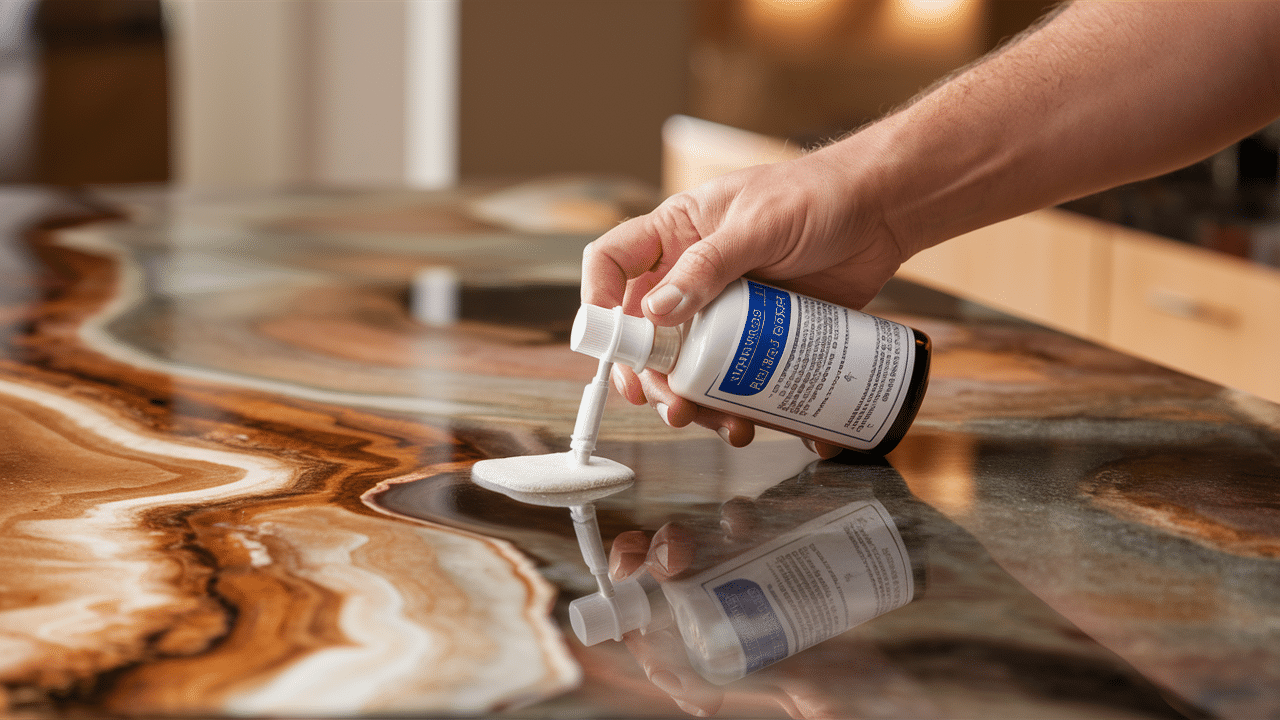
Unlike engineered quartz, natural quartzite is porous and requires sealing every 1-2 years to prevent stains. I had to get used to this ongoing maintenance after having maintenance-free laminate counters before.
The sealing process isn’t difficult—I can do it myself in about an hour—but it’s a task that must be remembered and scheduled. I mark it on my calendar as an annual home maintenance ritual.
To test if your countertop needs resealing, drop a small amount of water on the surface and watch. If it darkens or absorbs within a few minutes, it’s time to reseal. Some specialty colors may need more frequent sealing, depending on how porous they are.
If you skip this maintenance, you risk permanent staining that can be impossible to remove. This extra care step should be honestly considered for busy households.
Variation Between Slabs
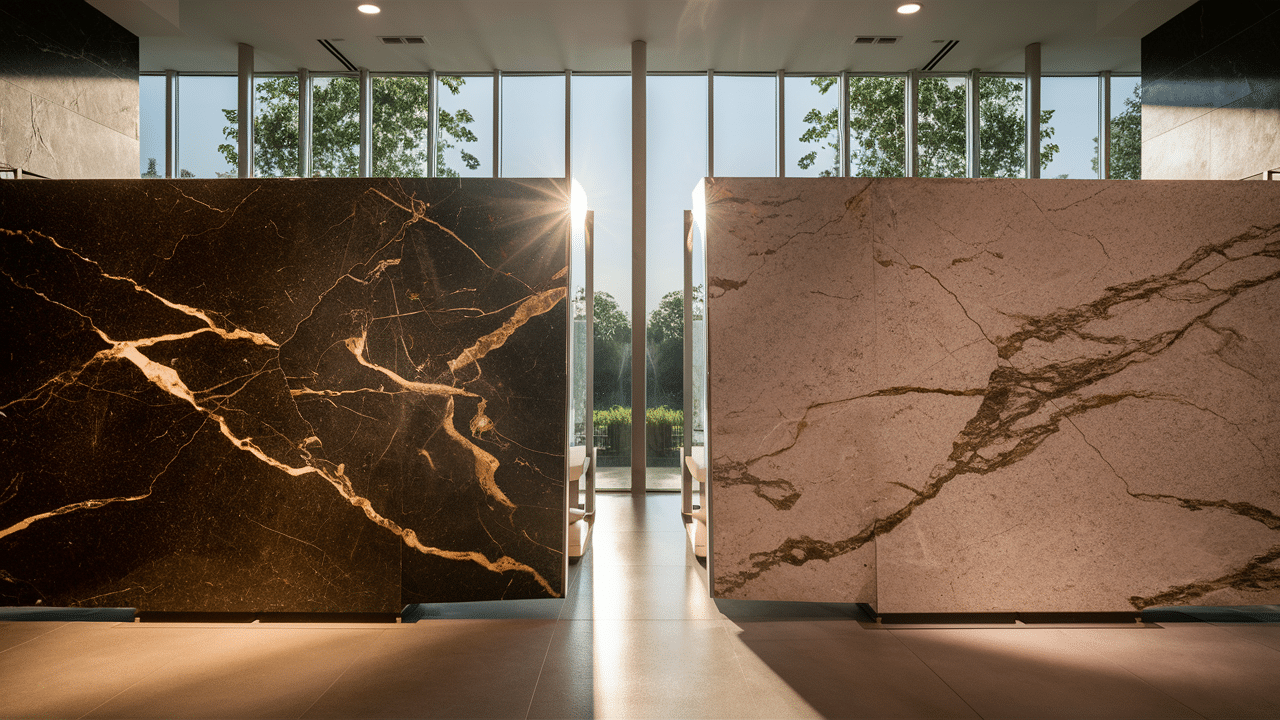
The natural variation means what you see in a small sample might look different across a full countertop. This surprised me during my selection process. The small sample I initially loved didn’t fully represent how the full slab would look in my kitchen.
Each quartzite slab is unique, with its own pattern, color intensity, and mineral inclusions. This means you must view the actual slabs you’ll be purchasing before they’re cut.
I spent an afternoon at the stone yard with my designer, choosing exactly which sections of which slabs would become my countertops. While this variation creates beautiful one-of-a-kind results, it can also lead to disappointment if you expect perfect consistency.
Some areas may have more dramatic veining than others, which requires thoughtful planning during installation. For perfectionist personalities, this natural variation might feel challenging.
Can Still Stain
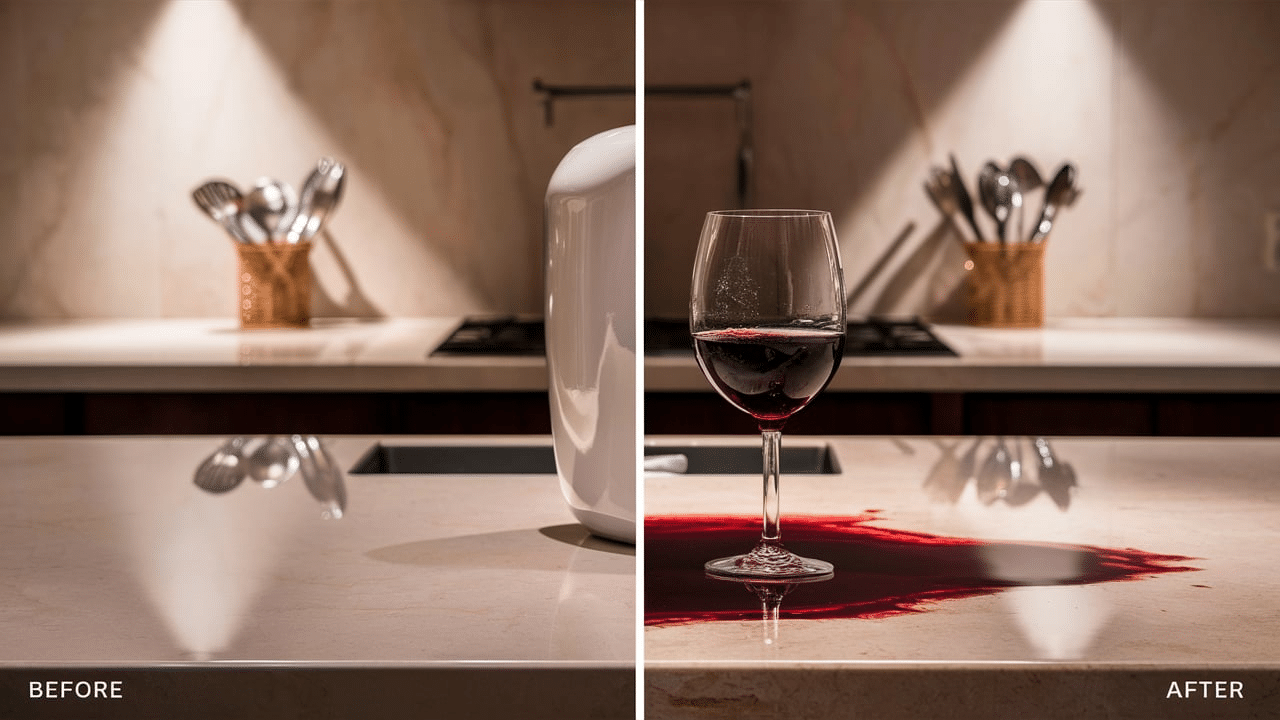
Even with sealing, certain substances like red wine or turmeric can stain if not wiped up quickly. I learned this lesson the hard way when I left some curry on the counter overnight. While a good sealer greatly improves stain resistance, it doesn’t make the stone completely impervious to everything.
Acidic foods like lemon juice, tomato sauce, and vinegar can also potentially etch the surface if left sitting too long. This vulnerability requires some lifestyle adjustments in families with young children or in households where cooking gets messy. I now keep cleaning wipes handy and am more vigilant about wiping spills immediately.
Deep-colored berries, coffee, and some oils can also leave marks if allowed to penetrate. For comparison, engineered quartz generally doesn’t have this issue, which might make it a better choice for extremely busy kitchens or less fastidious cooks.
Limited Color Range
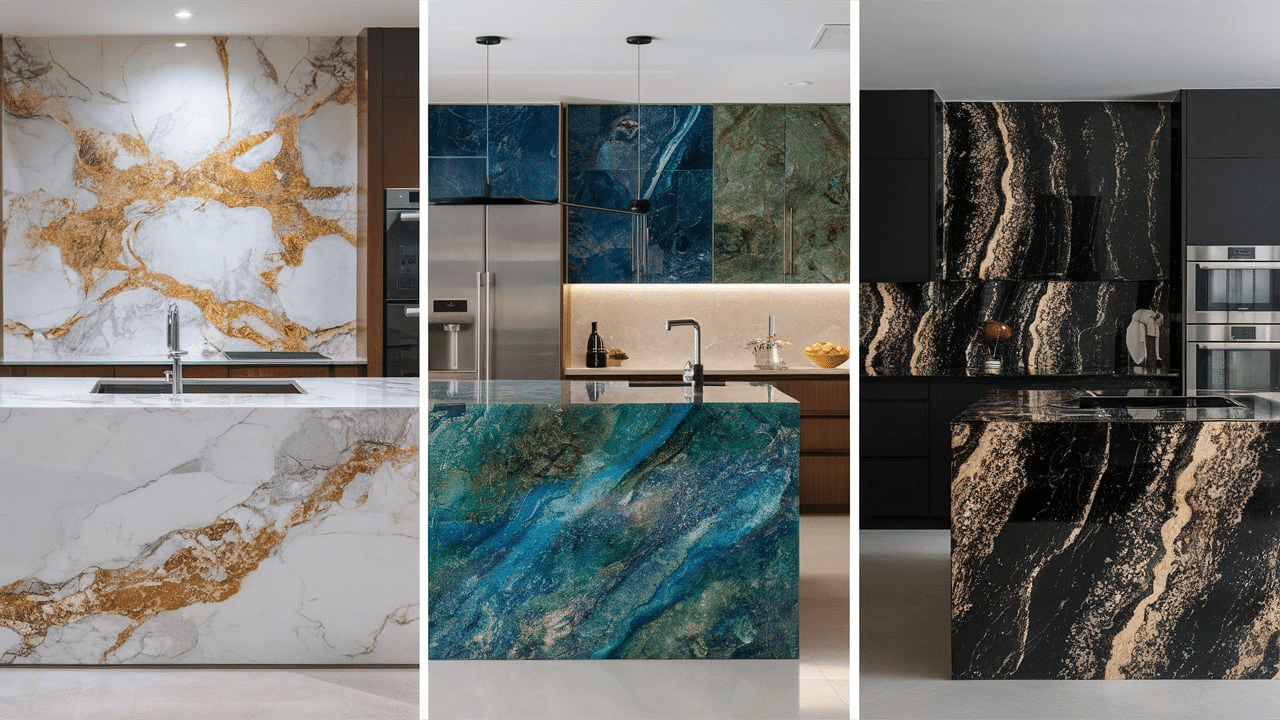
While beautiful, quartzite mainly comes in whites and grays with some variation. If you’re dreaming of bold colors like deep blue, emerald green, or black, your options with quartzite will be limited.
The natural formation process of quartzite typically results in lighter base colors with veining in grays, taupes, and occasionally gold or subtle blue tones. During my selection process, I found this limiting compared to the rainbow of colors available in manufactured quartz. To work around this, I incorporated color in other kitchen elements like the backsplash and accessories.
Some quartzite labeled in showrooms with vibrant colors are actually marble or other stones being incorrectly marketed. True quartzite rarely comes in saturated colors. For kitchens where a specific color palette is the primary design consideration, this limitation might make quartzite less suitable despite its other benefits.
Popular Quartzite Color Options and Styles
My personal favorites include:
White Macaubas
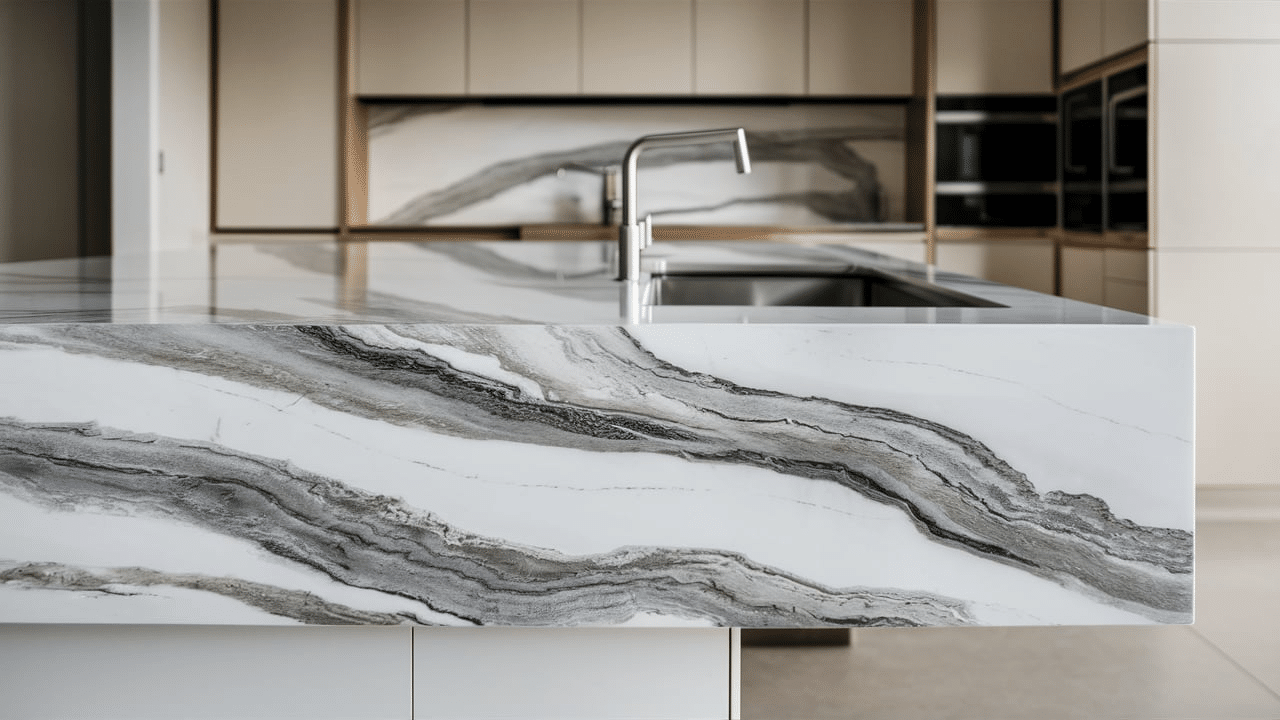
I chose this quartzite for my kitchen, which features flowing gray lines on a white background. The veining resembles gentle waves across a white sandy beach. It pairs beautifully with both warm and cool color schemes, making it incredibly versatile for various kitchen styles.
White Macaubas tends to be one of the more affordable quartzite options while still offering striking visual impact.
Sea Pearl
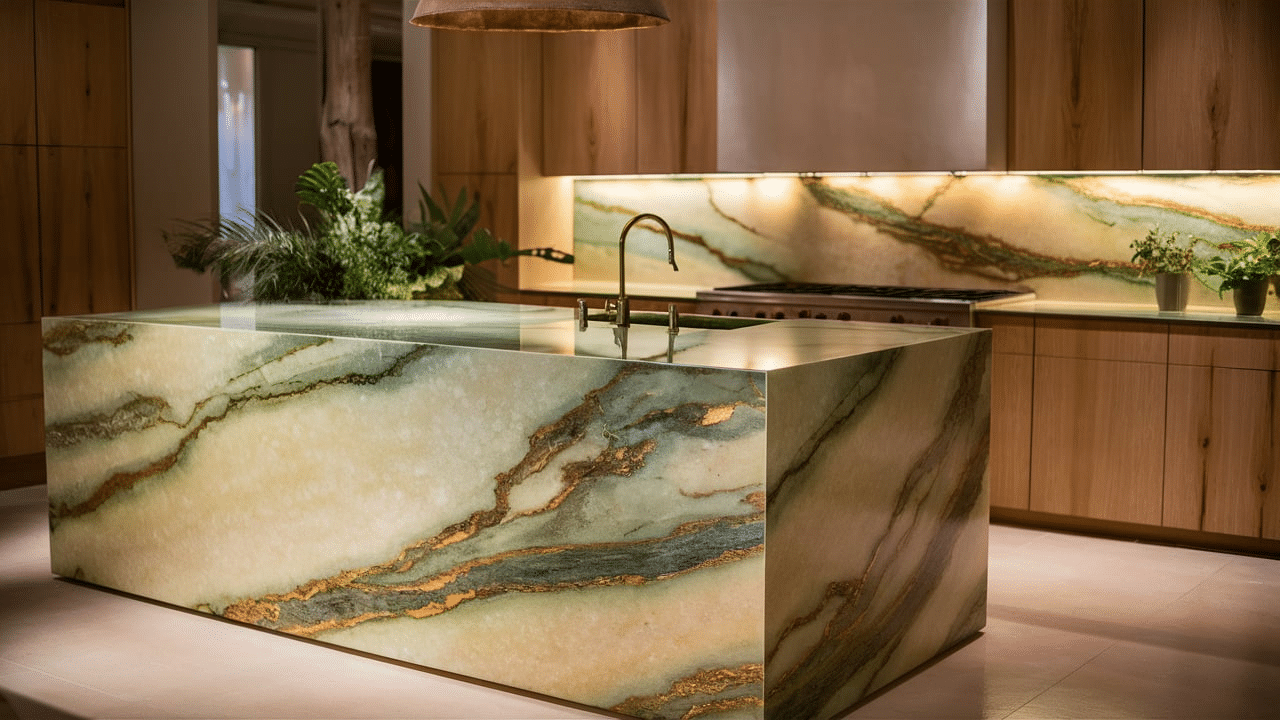
Offers a creamy background with subtle green and gold veining. This option has a softer, more organic feel than the stark white varieties.
The warm undertones make it perfect for kitchens with wood cabinets or earth-toned color schemes. The veining is typically less dramatic than some other varieties, creating a more subtle, elegant look.
Taj Mahal

Shows off a warm beige tone with gentle veining. This highly sought-after variety has a luxurious, sophisticated appearance. Its neutral color palette works with virtually any design style, from traditional to contemporary.
Taj Mahal tends to be on the higher end of the price spectrum due to its popularity and limited availability.
Super White
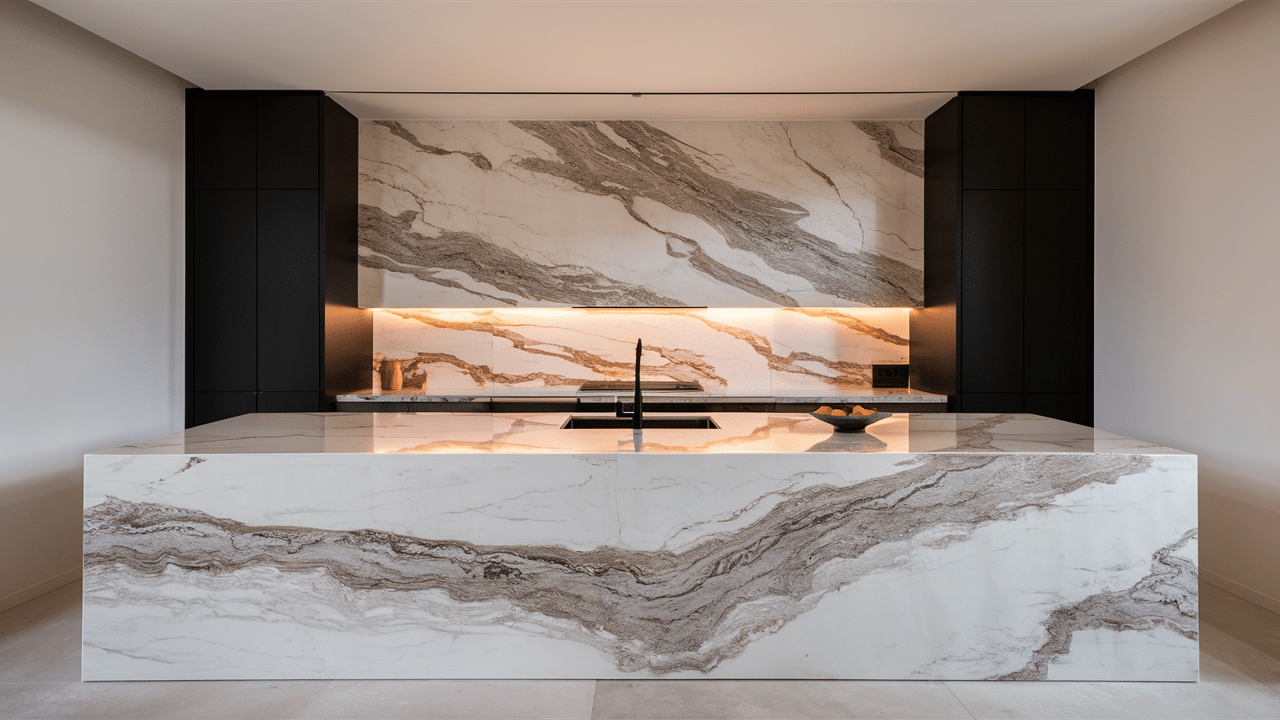
Despite the name, it has dramatic gray veining on a white base. This variety offers some of the most marble-like appearance but with quartzite’s superior durability. The bold veining creates dramatic movement across countertops.
While technically classified as quartzite, Super White sometimes has properties that fall between quartzite and marble, so thorough testing before purchase is wise.
Madre Perla
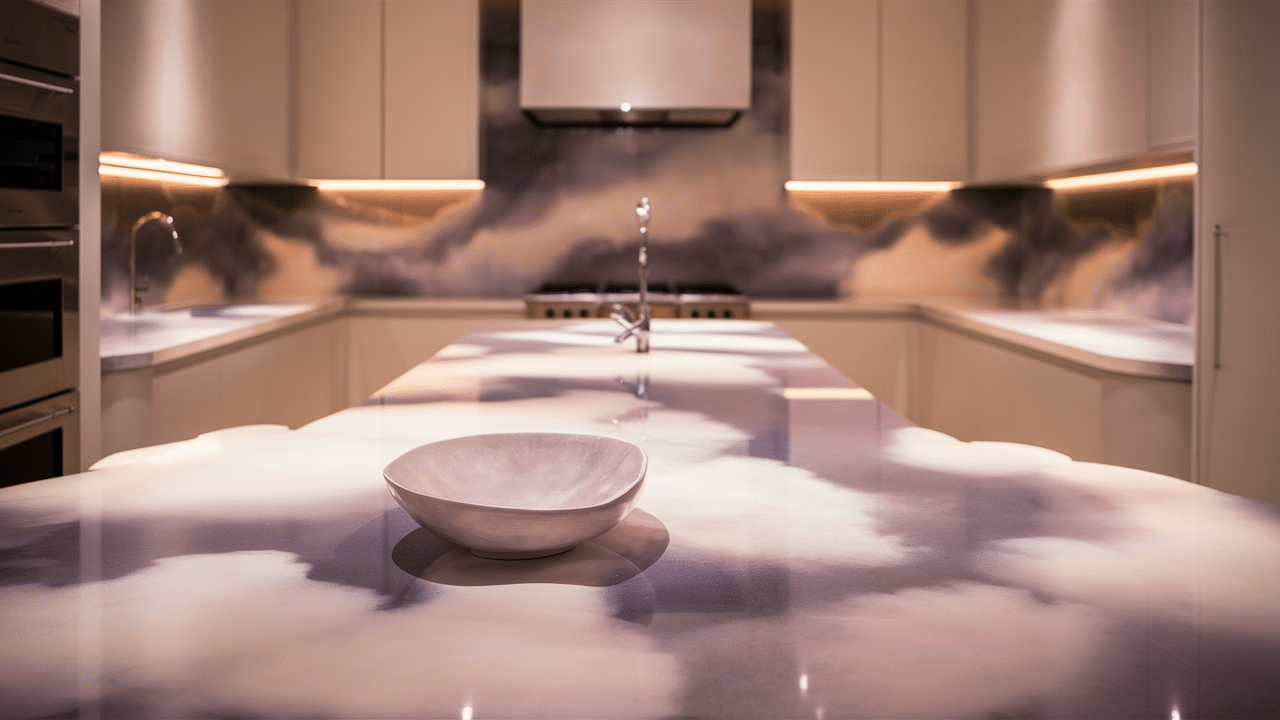
Displays a dreamy mix of whites and soft grays. This variety has a cloud-like, ethereal quality that creates a sense of serenity in any kitchen. The pattern tends to be more consistent than some other quartzites, making it easier to match across larger installations.
Each stone’s look is unique, so I recommend seeing full slabs in person before making your final choice. Photos and small samples can’t capture the full beauty and variation of these natural stones.
Ideal Locations for Quartzite Use
I’ve found quartzite works best in these areas:
- Kitchen countertops – Their hardness stands up to daily cooking activities and heat from pots and pans.
- Island tops – These make a beautiful centerpiece in an open kitchen where people gather.
- Bathroom vanities – Create a high-end look with good moisture resistance for daily use.
- Fireplace surrounds – The heat resistance prevents cracking or discoloration over time.
- Outdoor kitchens – Withstands weather better than many alternatives without fading.
I wouldn’t recommend it for floors, as it can be slippery when polished and requires more maintenance than practical for large areas.
Quartzite vs. Other Countertop Materials
How does quartzite stack up? Here’s my comparison:
| Material | Cost | Durability | Maintenance | Look |
|---|---|---|---|---|
| Quartzite | $60-120/sq ft | Very high | Medium (needs sealing) | Natural, elegant |
| Granite | $40-100/sq ft | High | Medium (needs sealing) | Natural, varied |
| Quartz | $50-120/sq ft | High | Low (no sealing) | Uniform, engineered |
| Marble | $60-100/sq ft | Medium (scratches) | High (stains easily) | Classic, veined |
| Laminate | $10-40/sq ft | Low | Low | Man-made, many designs |
Maintenance Tips for Longevity
To keep my quartzite looking its best, I follow these essential practices:
- Seal regularly – Apply a high-quality natural stone sealer every 12 months. Test if sealing is needed by placing a few drops of water on the surface – if it darkens quickly, it’s time to reseal.
- Wipe spills immediately – Acidic items like lemon juice, wine, coffee, and tomato sauce, especially. Quick cleanup prevents potential staining, even on sealed surfaces.
- Clean with gentle products – Use only pH-neutral cleaners or simple dish soap and water. Avoid anything with bleach, ammonia, citrus, or vinegar that can damage the sealer.
- Protect from scratches – Always use cutting boards, trivets, and coasters. While quartzite is hard, harsh abrasives and dragging rough-bottomed items can eventually cause micro-scratches.
- Avoid harsh chemicals – Keep hair dye, nail polish remover, perfume, and other strong chemicals away from the surface, as they can penetrate the sealer and stain the stone.
Final Thoughts
After living with quartzite for over a year now, I remain happy with my choice. The beauty and durability justify the higher price and maintenance for me. That said, it’s not for everyone.
Consider quartzite if you:
- Want natural stone with excellent durability
- Don’t mind some regular maintenance
- Have the budget for premium materials
- Value unique patterns and variations
Look elsewhere if you:
- Want the absolute lowest maintenance option
- Are working with a tight budget
- Prefer uniform, predictable patterns
Frequently Asked Questions
Is Quartzite the Same as Quartz?
No. Quartzite is a natural stone, while quartz is engineered using crushed stone and resins.
How Often Does Quartzite Need Sealing?
Most experts recommend sealing quartzite countertops every 1-2 years.
Can Quartzite Countertops Crack?
While very durable, any natural stone can crack if subjected to extreme impact or pressure.
Is Quartzite Good for Bathroom Countertops?
Yes! Its water resistance and durability make it excellent for bathrooms.
How Can I Tell if A Stone Is Really Quartzite?
True quartzite won’t etch with acid (like lemon juice) the way marble does, and it’s harder than granite.

